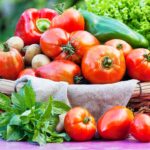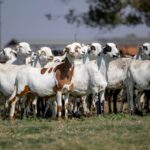Effective grazing management is crucial for sustainable livestock farming, especially in South Africa, where diverse ecosystems and variable climate conditions present unique challenges. Rotational grazing is a highly effective method that can enhance pasture health, increase livestock productivity, and improve soil quality. Here are some tips for implementing successful rotational grazing practices on your farm.
1. Understand the Basics of Rotational Grazing
Rotational grazing involves dividing pastures into smaller paddocks and rotating livestock through these areas. This practice allows for the rest and recovery of grazed pastures, promoting healthier grass growth and reducing overgrazing.
2. Assess Your Pasture Resources
Before implementing rotational grazing, conduct a thorough assessment of your pasture resources. Evaluate the type and condition of grasses, soil health, and water availability. Understanding these factors will help you determine the appropriate number of paddocks and livestock to sustain.
3. Plan Your Grazing System
Design a grazing plan that outlines the number of paddocks, grazing periods, and rest intervals for each pasture. A common approach is to allow livestock to graze a paddock for a short period, followed by an extended rest period of several weeks or months, depending on the pasture’s recovery rate.
4. Monitor Grass Growth and Recovery
Regularly monitor grass growth and recovery rates in your paddocks. Look for indicators such as grass height and density, which can help you determine when to move livestock to the next paddock. Maintaining proper recovery periods is vital for sustaining healthy pastures.
5. Utilize Fencing and Water Supply
Implement durable fencing to create distinct paddocks and facilitate easy movement of livestock. Additionally, ensure that each paddock has adequate water supply. This can be achieved by installing troughs or utilizing natural water sources to prevent livestock from damaging pasture areas while searching for water.
6. Adjust Grazing Pressure
Grazing pressure refers to the number of livestock per unit area and their impact on pasture health. Adjusting grazing pressure according to pasture condition and growth rates is essential. Consider reducing livestock numbers in times of drought or when pastures are stressed to prevent overgrazing.
7. Integrate Other Livestock Types
Integrating different types of livestock (e.g., cattle, sheep, and goats) can improve pasture utilization. Each species grazes differently, allowing for more efficient use of available forage and promoting biodiversity within the pasture ecosystem.
8. Implement Cover Crops and Forage Varieties
Planting cover crops or diverse forage varieties can enhance soil health, improve nutrient cycling, and provide additional grazing options. Consider incorporating legumes and other deep-rooted plants to improve soil structure and nutrient availability.
9. Educate Yourself and Your Team
Continuous education is vital for successful grazing management. Attend workshops, seminars, and field days focused on rotational grazing practices. Sharing knowledge with your team and local farming community can foster collaboration and innovation.
10. Evaluate and Adapt Your Practices
Regularly evaluate the effectiveness of your rotational grazing system and be open to adapting your practices based on observed outcomes. Use data collected from pasture monitoring, livestock performance, and environmental conditions to make informed decisions.
Implementing rotational grazing practices can significantly benefit South African farmers by promoting sustainable pasture management, enhancing livestock health, and improving soil quality. By understanding the principles of rotational grazing, conducting thorough assessments, and continually adapting your practices, you can create a resilient grazing system that supports both your livestock and the environment.
Join 'Farmers Mag' WhatsApp Channel
Get the latest Farming news and tips delivered straight to your WhatsApp
CLICK HERE TO JOIN






